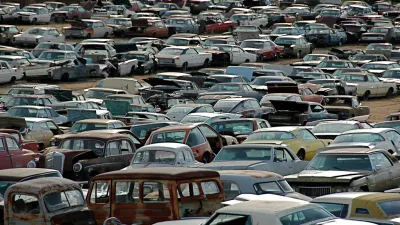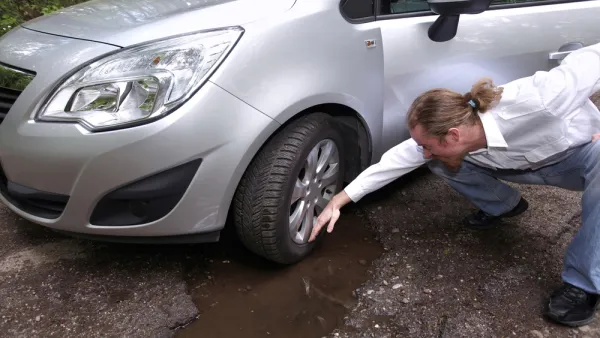The Great Recession ended in the summer of 2009. Unemployment has fallen and consumer spending has risen, as have most economic metrics save one: vehicle miles traveled. There is a list of reasons why VMT hasn't risen, and perhaps won't.

Are the signs of peak driving, i.e., peak vehicle miles traveled (VMT), here to stay or is it just an aberration and the metric will begin increasing, i.e., it is a 'lagging indicator'?
Fortune's Chris Matthews cites five reasons given by "Behind the Numbers" (sorry, subscription only, but Matthews kindly lists them) that explain why driving hasn't increased as have most metrics, e.g. gross domestic product, since the Great Recession ended. He admits to being surprised that it "has been stagnant for almost seven years" (see graph):
The only other time in history that we've seen a similarly long time between the peak and trough was following the 1982 recession, in which it took 39 months for total vehicle miles traveled to recover to its previous peak. It’s now been more than twice that amount of time since we reached the all-time high in vehicle miles driven, and unlike the case in the 1980s, we don’t have the excuse of a recent gas-tax hike to blame for it.
"So, what is going on here?" asks Matthew incredulously. "In a note to clients (August 14), independent research firm Behind the Numbers argued that we’re entering a new era in which Americans simply prefer to drive less." They write:
It’s unlikely that miles driven is a lagging indicator that will eventually return to its prior trend. There is ample evidence that a 60-year trend of increased per capita driving has ended…. Among the reasons a sharp reversal is unlikely:
- Boomers are getting older and driving less.
- Millennials are less interested in driving, and are now the largest generation in the US.
- The trend toward living near the urban core reduces the need for driving.
- Higher gas prices discourage driving.
- Mass transportation is winning over more consumers.
However, Matthews proceeds to dispel some of these reasons, and concludes by writing, "There’s plenty of reason to believe that America’s love affair with the car is beginning to cool, but it’s probably a bit early to declare this case closed."
FULL STORY: Have Americans really fallen out of love with driving?

National Parks Layoffs Will Cause Communities to Lose Billions
Thousands of essential park workers were laid off this week, just before the busy spring break season.

Retro-silient?: America’s First “Eco-burb,” The Woodlands Turns 50
A master-planned community north of Houston offers lessons on green infrastructure and resilient design, but falls short of its founder’s lofty affordability and walkability goals.

Delivering for America Plan Will Downgrade Mail Service in at Least 49.5 Percent of Zip Codes
Republican and Democrat lawmakers criticize the plan for its disproportionate negative impact on rural communities.

Test News Post 1
This is a summary

Test News Headline 46
Test for the image on the front page.

Balancing Bombs and Butterflies: How the National Guard Protects a Rare Species
The National Guard at Fort Indiantown Gap uses GIS technology and land management strategies to balance military training with conservation efforts, ensuring the survival of the rare eastern regal fritillary butterfly.
Urban Design for Planners 1: Software Tools
This six-course series explores essential urban design concepts using open source software and equips planners with the tools they need to participate fully in the urban design process.
Planning for Universal Design
Learn the tools for implementing Universal Design in planning regulations.
EMC Planning Group, Inc.
Planetizen
Planetizen
Mpact (formerly Rail~Volution)
Great Falls Development Authority, Inc.
HUDs Office of Policy Development and Research
NYU Wagner Graduate School of Public Service





























